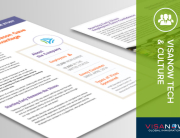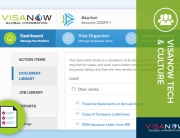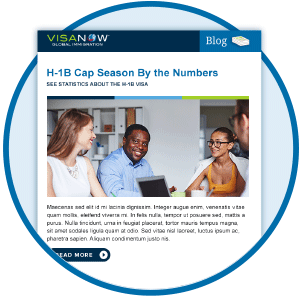After months of congressional and industry negotiations behind closed doors, details regarding the proposed immigration reform bill are finally being revealed. Of course, nothing is set in stone and the terms of immigration reform could change significantly by the time a bill is passed and signed (if that even occurs). With that in mind, below are significant changes that will affect our clients and foreign national employees.
Positive developments
H-1B visas:
- Raise the base cap of 65,000 to 110,000 new visas available per year. (The cap can be raised to as much as 180,000 based on demand in prior years.)
- Raise the advanced degree exemption from 20,000 to 25,000 for graduates of programs in science, technology, engineering, and mathematics from US schools.
- Spouses of H-1B employees (H-4 visa holders) can seek work authorization if the sending country of the worker provides reciprocal treatment to spouses of U.S. workers.
- Establish a 60-day transition period for H-1B workers to change jobs. There is currently no transition period and H-1B employees who lose their jobs should leave the US within 10-15 days.
- Provide dual intent visas for all students who come here on bachelor’s degree programs or above.
Green card allocation:
The bill exempts the following categories from the annual numerical limits on employment-based immigrants:
- derivative beneficiaries of employment-based immigrants;
- aliens of extraordinary ability in the sciences, arts, education, business or athletics;
- outstanding professors and researchers; multinational executives and managers;
- doctoral degree holders in any field; and
- certain physicians.
Merit-based immigrant visas:
- The merit based visa, created in the fifth year after enactment, awards points to individuals based on their education, employment, length of residence in the US and other considerations. Those individuals with the most points earn the visas. Those who access the merit based pathway to earn their visa are expected to be talented individuals, individuals in our worker programs and individuals with family here. 120,000 visas will be available per year based on merit.
- allocate merit-based immigrant visas beginning on October 1, 2014 for employment-based visas that have been pending for three years
Entrepreneur visa:
- The bill creates a startup visa for foreign entrepreneurs who seek to immigrate to the United States to start their own companies.
Creation of W visas for lower-skilled workers:
- Starting with 20,000 available visas per year, and up to 75,000 by the fourth year.
- Many more details to come.
Neutral Developments
Mandatory E-Verify:
All employers will be required to use the E-Verify system over a 5-year phase-in period, as follows.
- Employers with more than 5,000 employees will be phased in within 2 years.
- Employers with more than 500 employees will be phased in within 3 years.
- All other employers, including agricultural employers, will be phased in within 4 years.
As part of the E-Verify system, every non-citizen will be required to show their “biometric work authorization card” or their “biometric green card.
For more information on enrolling in E-verify now, please follow up with us.
Negative Developments
H-1B visas:
The proposed plan will likely raise wage requirements for H-1B workers. It is unknown at this time what exactly this means.
Changes for H-1B dependent employers:
- Higher fees for employers with more than 50 employees
- With 30-49% of employees in H-1B or L-1 status (and without green card petitions pending), a $5,000 fee will need to be paid per additional worker in H or L status.
- With 50% or more of employees in H-1B or L-1 status (who do not have green card petitions pending), a $10,000 fee will need to be paid per additional worker in H or L status.
- Bans on additional H and L employment, companies will be banned from bringing in any additional workers in H or L status if:
- In Fiscal Year 2014 more than 75% of their workers are H-1B or L-1 employee
- In Fiscal Year 2015 more than 65% of their workforce are H-1B and L-1 workers.
- In Fiscal Year 2016, more than 50% of their workforce are H-1B and L-1 workers.
H-1B recruitment requirement:
- Employers will be required to post a detailed job opening on the Department of Labor’s website for at least 30 calendar days before hiring an H-1B applicant to fill that position
- It is not clear at this time how this would be designed or implemented. We will be following this very closely.
We will continue to track these developments keep our clients informed about how these changes will affect their hiring practices and the foreign nationals currently employed.







